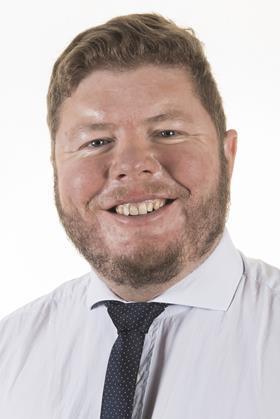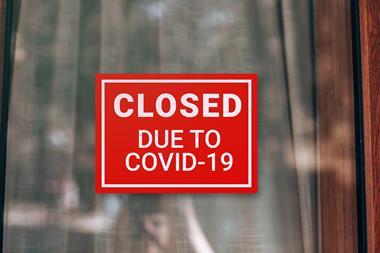Andrew Sewell, Gallagher Bassett’s UK technical director speaks to Insurance Times about insurtech and how the pandemic has demonstrated the sector’s importance, but a human touch is still necessary for complex claims
1. During lockdown technology has been instrumental especially for claims, do you see this continuing and what opportunities does this hold for insurtechs post-pandemic?
The Covid-19 pandemic has become the great accelerator across a wide front of commercial activity. The more intensive use of new technology specifically in the insurance industry had already been underway for at least a decade but covid turned a gradual and incremental process into a fast-paced revolution. There is an old saying that we see decades when nothing much happens and then there are weekends when whole decades happen. We are having one of those weekends.
Because the pandemic has impacted everyone, it has sped up not only our internal change processes as carriers, TPAs and brokers, but also—and this is critical—the acceptance and even expectation of these changes among our customers. All parties are moving faster.

The vastly increased scope of working from home, of using on-line applications even more intensively, of moving ever more of all of our daily work and pleasure, personal and professional to smartphones and laptops has eliminated long standing barriers, both real and imagined, to user acceptance for customer-facing aspects of insurtech.
History shows us and over and over that once major technology enhancements—the use of automobiles, electricity, radio and television, early computers—achieve a certain critical mass, use and acceptance snowball until these new techs occupy essentially every suitable social and commercial role.
All the signs we see indicate that insurtech has reached that critical mass, making it highly unlikely that current movements to make all lines of insurance easier to access and work with, more timely across all types of transactions, easier to customise to fit particular needs and more financially efficient in transferring selected components of risk will not continue even after covid becomes a subject of “do you remember when…” conversations.
What we broadly call “insurtech” is really three nested lines of development which reinforce each other:
• Better customer/client interfaces—this is the “Amazon Effect” where we deploy the latest smartphone and web-based applications to make it much simpler and faster for people to buy programs, file claims, communicate with their carrier/TPA, and get real time information.
• Radically improved internal processes—this is the area where we use RPA (Robotic Process Automation), AI (artificial intelligence), and other new tech concepts to get a wide variety of tasks, from underwriting to claims, done much faster, more accurately, and with less friction cost.
• New concepts in risk transfer—this is the use of parametric insurance policy designs, non-traditional risk plans, catastrophe (cat) bonds and other new risk financing concepts to improve the fiscal efficiency of the basic insurance concept itself.
It is hard to think of a likely scenario in which these developments will come to a shuddering halt any time soon. We are really just beginning to understand and exploit the amazing improvements these concepts offer over the way insurance has been done of the last 150 years or so.
2. Following the recent business interruption case appeal at the Supreme Court, do you think insurtechs are best placed to help rebuild trust with customers?
Insurtech clearly has a role to play, especially in making coverages more “user friendly” generally. Perhaps the most promising development in this regard is parametric insurance. Traditional coverages have been far too reliant on piling more words on top of yet more words inside policy forms that have been largely unchanged for decades.
Ambiguity is the enemy of efficient risk transfer and too many policies have become word clouds. Parametric policies offer a great potential for making risk mechanisms crisp and transparent to all parties.
One of our major challenges right now is to give our products and processes as much crystalline clarity as possible insurtech led solutions may well be able to assist in solving the long-standing issue of communication between insurer and policy holder
3. How can insurtechs help insurers better manage claims process?
We see the insurtechs as instruments to help us all disentangle processes best handled by automated systems from those which will materially benefit from the attentions of a trained, experienced professional. Most claims are simple but we have gotten all claims tangled in a baroque process designed to cope with the often small minority of claims which are complex.
Historically, we have not been good at separating the sheep from the goats, so every claim goes down the goat path. Adding computerised costs calculations and electronic documentation has not changed the essential problem. By taking a “clean sheet of paper” approach and leaving “but we’ve always done it that way” issues by the wayside, the insurtech movement has been very effective thus far in reducing claims processes down to just those tasks which have a material impact on the quality of the final product.

4. How can insurtechs help insurers reduce costs?
See above. The big reduction in costs comes from eliminating every manual, live human being based process which does not either enhance the accuracy of the claim settlement or involve unique knowledge generally not available to AI-like applications. The primary place where we need real, live people is in handling complex claims which involve other real, live people.
The benefits of the human touch are real in those situations where we require investigation or—more importantly—human empathy. By designing coverages which make all aspects of the claim process transparent to all parties we can focus our use of experienced handlers in those instances where they make a serious difference.
5. What upcoming technologies do you see in the insurtech sector in 2021 that could overhaul claims?
• Enhanced smart intake—most routine accident damage motor claims as an example can be completed on the intake call nowadays. Insurtech is showing various ways in which we can (a) gather needed data from multiple sources in real time and (b) expand our intake interaction to settle bent metal claims with one call/communication. These same concepts can be adapted to other coverages.
• AI based fraud detection—no need to rely solely on claims handlers instincts to spot those claims needing a little special care, equally speedier validation of those claims that need to be settled and settled quickly.
• Real-time data integration—what information does the claim process need on most/all claims which is not resident in the underwriting database or other carrier/TPA data sources? The use of APIs to query those external data sources automatically as opposed to having a claims handler try to figure out how to obtain the needed information.
• Establish auto-adjudication parameters with the goal of completing 80% of claims untouched by human hands, this includes document scanning, reading, with automatic valuation or pre-determined outcomes based on the input delivered directly to a policy holder or third party claimant.

Hosted by comedian and actor Tom Allen, 34 Gold, 23 Silver and 22 Bronze awards were handed out across an amazing 34 categories recognising brilliance and innovation right across the breadth of UK general insurance.



















































